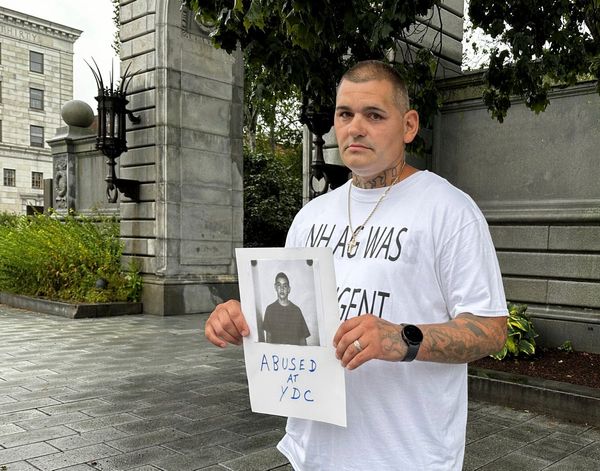When Purdue Pharma introduced the opioid painkiller OxyContin in 1995, the company came to the crowded pharmaceutical market armed with a unique advantage granted by the Food and Drug Administration. The company was allowed to claim that the drug _ which would become a leading player in the nation's tragedy of opioid addiction and overdose deaths _ was less susceptible to abuse and less likely to cause addiction than other opioids.
It was not true. Executives at Purdue Pharma and the members of the Sackler family who owned and controlled the company knew it was not true. The FDA, then headed by Dr. David Kessler, who was appointed by President George H. W. Bush and left in place by Bill Clinton, should have known, as well, and never should have allowed such a potent drug to be marketed with such a rosily dishonest campaign. But using an army of salesmen and women who wooed thousands of doctors with false talking points, fees, travel and meals, Purdue Pharma turned OxyContin into a cash machine that has generated more than $35 billion in sales.
The combination of pharmaceutical companies willing to do everything to increase sales, and a regulatory agency unwilling to stop them and protect the nation, has cropped up regularly.
A database created after passage of the Physician Payments Sunshine Act in 2014 catalogs more than 11 million payments to physicians and hospitals. The division of the FDA responsible for approving opioids gets 75 percent of its budget from the drug industry because in 1992, with the FDA badly underfunded, Congress passed legislation that levies huge fees for new drug approval applications. The law makes the agency beholden to the industry. And Dr. Raeford Brown, the current chair of the FDA opioid advisory committee, is apoplectic that the agency continues to approve dangerous opioids over his committee's objections.
Purdue Pharma is not the only bad actor, and OxyContin is not the FDA's only misstep. But Purdue Pharma presents a clear case study for how badly our drug companies and our regulatory process need to be reined in.
The "contin" in OxyContin stands for "continuous." The formulation spreads its effects over 12 hours rather than the six-hour window of most opioids. The FDA accepted Purdue Pharma's argument in 1995 that the new drug was less likely to be abused or cause addiction than its competitors.
The company never provided evidence to support the theory, because clinical trials have shown it's not true even when the drugs are swallowed as directed. And Purdue's leaders, including the Sacklers, the family that owns the company, knew formulations like OxyContin's are particularly dangerous because emails discovered in ongoing litigation show they knew another continuous-release opioid the company produced, MS Contin, had become an addicting recreational drug for the same reason OxyContin did: controlled-release formulations, crushed and snorted, produce a powerful high that standard painkillers cannot provide.
Until 2007, Purdue Pharma continued to push the false line that less than 1 percent of patients prescribed OxyContin would become addicted. In that year, the company pleaded guilty to a felony charge of "misbranding" and three of its top executives pleaded guilty to misdemeanors. The men and the company admitted they had marketed the drug by misrepresenting its potential to cause addiction and be abused, and paid $635 million in fines. But Purdue never stopped pushing to increase sales of OxyContin and other opioids and the FDA never made the company stop.
More than 200,000 Americans have died from overdoses related to prescription opioids since 1996. Hundreds of thousands more who died from overdoses of heroin or fentanyl were introduced to opioids via prescription painkillers obtained legally or illegally. OxyContin and Purdue Pharma and the Sacklers can't be blamed for all of that tragedy, but neither can they avoid sharing the blame.
More than 1,600 lawsuits filed against Purdue for its part in this plague _ including one by Suffolk County that has been joined by the New York attorney general _ are coming home to roost, although most plaintiffs may never collect. Purdue Pharma last month settled a suit brought by Oklahoma by agreeing to pay $275 million. The company wanted to avoid a trial, and the state wanted to get paid before a possible company bankruptcy. The Sacklers have a fortune worth $13 billion and social status bought with huge charitable donations. But now the family is being shunned and its assets are in jeopardy, including a Long Island estate.
But even as the fallout from two decades of the mishandling of OxyContin mounts, new and more powerful opioids continue to be approved over the strenuous objections of the FDA's own experts. Swarms of salesmen and women push doctors to prescribe the drugs, which studies show are often ineffective and nearly always addictive. FDA commissioners still side with pharmaceutical companies, even when proposed drugs are clearly dangerous. And opioid addicts are still dying at the rate of about 150 a day.







